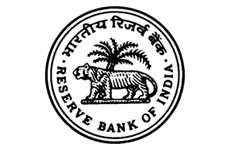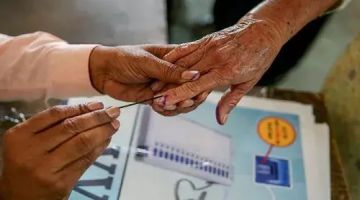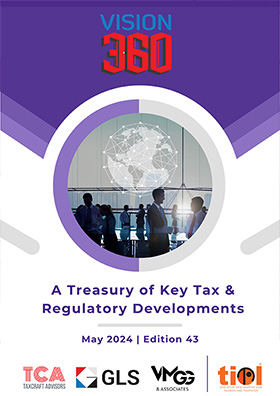RBI asks banks to grant 90-day moratorium on EMIs against all types of loans
By TIOL News Service
NEW DELHI, MARCH 27, 2020: IN a move that was turning out to be overdue, the RBI today came out with the big bang announcement of reducing the repo rate by 75 basis point and CRR by 100 basis point. The reduction in the repo rate would now result in reduction of interest rates across board in various types of commercial loans as well as home loan.
The RBI also announced a 90-day moratorium on EMI payment against all types of existing loans. The RBI Governor today said that all lending institutions - commercial banks, NBFCs, Housing Banks, Cooperative banks etc, have been permitted to allow such a freeze on EMIs to be paid for the next 90 days. It is now widely expected that all banks on their own would come out with similar annocements with some strings attached. There are chances that such a moratorium may not be uniform for all loans as banks are likely to grant greater relief to MSMEs and may minimise the benefits to high-risk loans.
The RBI Governor also clarified that such a moratorium would neither adversely affect the CIBIL rating nor assets classification for any borrower. The RBI has also taken measures to prop up liquidity in the economy which is now going to be 3.2% of the GDP.
Some of the measures announced today are as follows:
1. Targeted Long Term Repos Operations (TLTROs)
The onset and rapid propagation of COVID-19 in India has ignited large sell-offs in the domestic equity, bond and forex markets. With the intensification of redemption pressures, liquidity premia on instruments such as corporate bonds, commercial paper and debentures have surged. Combined with the thinning of trading activity with the COVID outbreak, financial conditions for these instruments, which are used, inter alia, to access working capital in the face of the slowdown in bank credit, have also tightened. In order to mitigate their adverse effects on economic activity leading to pressures on cash flows, it has been decided that the Reserve Bank will conduct auctions of targeted term repos of up to three years tenor of appropriate sizes for a total amount of up to Rs. 1,00,000 crore at a floating rate linked to the policy repo rate.
Liquidity availed under the scheme by banks has to be deployed in investment grade corporate bonds, commercial paper, and non-convertible debentures over and above the outstanding level of their investments in these bonds as on March 27, 2020. Banks shall be required to acquire up to fifty per cent of their incremental holdings of eligible instruments from primary market issuances and the remaining fifty per cent from the secondary market, including from mutual funds and non-banking finance companies. Investments made by banks under this facility will be classified as held to maturity (HTM) even in excess of 25 per cent of total investment permitted to be included in the HTM portfolio. Exposures under this facility will also not be reckoned under the large exposure framework.
The first TLTRO auction will be held today (March 27, 2020). Following a review of the outcome of this auction, the subsequent TLTRO auctions will be announced. Details about this facility are being issued separately.
2. Cash Reserve Ratio
a. Liquidity in the banking system remains ample, as reflected in absorption of surpluses from the banking system under reverse repo operations of the LAF of the order of Rs. 2.86 lakh crore on a daily average basis during March 1-25, 2020. It is observed, however, that the distribution of this liquidity is highly asymmetrical across the financial system, and starkly so within the banking system.
As a one-time measure to help banks tide over the disruption caused by COVID-19, it has been decided to reduce the cash reserve ratio (CRR) of all banks by 100 basis points to 3.0 per cent of net demand and time liabilities (NDTL) with effect from the reporting fortnight beginning March 28, 2020. This reduction in the CRR would release primary liquidity of about Rs. 1,37,000 crore uniformly across the banking system in proportion to liabilities of constituents rather than in relation to holdings of excess SLR. This dispensation will be available for a period of one year ending on March 26, 2021.
b. Furthermore, taking cognisance of hardships faced by banks in terms of social distancing of staff and consequent strains on reporting requirements, it has been decided to reduce the requirement of minimum daily CRR balance maintenance from 90 per cent to 80 per cent effective from the first day of the reporting fortnight beginning March 28, 2020. This is a one-time dispensation available up to June 26, 2020.
3. Marginal Standing Facility
Under the marginal standing facility (MSF), banks can borrow overnight at their discretion by dipping up to 2 per cent into the Statutory Liquidity Ratio (SLR). In view of the exceptionally high volatility in domestic financial markets which bring in phases of liquidity stress and to provide comfort to the banking system, it has been decided to increase the limit of 2 per cent to 3 per cent with immediate effect. This measure will be applicable up to June 30, 2020. This is intended to provide comfort to the banking system by allowing it to avail an additional Rs. 1,37,000 crore of liquidity under the LAF window in times of stress at the reduced MSF rate announced in the MPC’s resolution.
These three measures relating to TLTRO, CRR and MSF will inject a total liquidity of Rs. 3.74 lakh crore to the system.
4. Widening of the Monetary Policy Rate Corridor
In view of persistent excess liquidity, it has been decided to widen the existing policy rate corridor from 50 bps to 65 bps. Under the new corridor, the reverse repo rate under the liquidity adjustment facility (LAF) would be 40 bps lower than the policy repo rate. The marginal standing facility (MSF) rate would continue to be 25 bps above the policy repo rate.
II. Regulation and Supervision
Alongside liquidity measures, it is important that efforts are undertaken to mitigate the burden of debt servicing brought about by disruptions on account of the fall-out of the COVID-19 pandemic. Such efforts, in turn, will prevent the transmission of financial stress to the real economy, and will ensure the continuity of viable businesses and provide relief to borrowers in these extraordinarily troubled times.
5. Moratorium on Term Loans
All commercial banks (including regional rural banks, small finance banks and local area banks), co-operative banks, all-India Financial Institutions, and NBFCs (including housing finance companies and micro-finance institutions) (“lending institutions”) are being permitted to allow a moratorium of three months on payment of instalments in respect of all term loans outstanding as on March 1, 2020. Accordingly, the repayment schedule and all subsequent due dates, as also the tenor for such loans, may be shifted across the board by three months.
6. Deferment of Interest on Working Capital Facilities
In respect of working capital facilities sanctioned in the form of cash credit/overdraft, lending institutions are being permitted to allow a deferment of three months on payment of interest in respect of all such facilities outstanding as on March 1, 2020. The accumulated interest for the period will be paid after the expiry of the deferment period.
In respect of paragraphs 5 and 6 above, the moratorium/deferment is being provided specifically to enable the borrowers to tide over the economic fallout from COVID-19. Hence, the same will not be treated as change in terms and conditions of loan agreements due to financial difficulty of the borrowers and, consequently, will not result in asset classification downgrade. The lending institutions may accordingly put in place a Board approved policy in this regard.
7. Easing of Working Capital Financing
In respect of working capital facilities sanctioned in the form of cash credit/overdraft, lending institutions may recalculate drawing power by reducing margins and/or by reassessing the working capital cycle for the borrowers. Such changes in credit terms permitted to the borrowers to specifically tide over the economic fallout from COVID-19 will not be treated as concessions granted due to financial difficulties of the borrower, and consequently, will not result in asset classification downgrade.
In respect of paragraphs 5, 6 and 7, the rescheduling of payments will not qualify as a default for the purposes of supervisory reporting and reporting to credit information companies (CICs) by the lending institutions. CICs shall ensure that the actions taken by lending institutions pursuant to the above announcements do not adversely impact the credit history of the beneficiaries.
8. Deferment of Implementation of Net Stable Funding Ratio (NSFR)
As part of reforms undertaken in the years following the global financial crisis, the Basel Committee on Banking Supervision (BCBS) had introduced the Net Stable Funding Ratio (NSFR) which reduces funding risk by requiring banks to fund their activities with sufficiently stable sources of funding over a time horizon of a year in order to mitigate the risk of future funding stress. As per the prescribed timeline, banks in India were required to maintain NSFR of 100 per cent from April 1, 2020. It has now been decided to defer the implementation of NSFR by six months from April 1, 2020 to October 1, 2020.
9. Deferment of Last Tranche of Capital Conservation Buffer
The capital conservation buffer (CCB) is designed to ensure that banks build up capital buffers during normal times (i.e., outside periods of stress) which can be drawn down as losses are incurred during a stressed period. As per Basel standards, the CCB was to be implemented in tranches of 0.625 per cent and the transition to full CCB of 2.5 per cent was set to be completed by March 31, 2019. It was subsequently decided to defer the implementation of the last tranche of 0.625 per cent of the CCB from March 31, 2019 to March 31, 2020. Considering the potential stress on account of COVID-19, it has been decided to further defer the implementation of the last tranche of 0.625 per cent of the CCB from March 31, 2020 to September 30, 2020. Consequently, the pre-specified trigger for loss absorption through conversion/write-down of Additional Tier 1 instruments (PNCPS and PDI) shall remain at 5.5 per cent of risk-weighted assets (RWAs) and will rise to 6.125 per cent of RWAs on September 30, 2020.
III. Financial Markets
The decision in respect of financial markets is essentially of a developmental nature, intended to improve depth and price discovery in the forex market segments by reducing arbitrage between onshore and offshore markets. This measure assumes greater importance in the context of the increased volatility of the rupee caused by the impact of COVID-19 on currency markets.
10. Permitting Banks to Deal in Offshore Non-Deliverable Rupee Derivative Markets (Offshore NDF Rupee Market)
The offshore Indian Rupee (INR) derivative market - the Non-Deliverable Forward (NDF) market - has been growing rapidly in recent times. At present, Indian banks are not permitted to participate in this market, although the benefits of their participation in the NDF market have been widely recognised. All aspects of the issue have been examined in detail and a consensus has emerged in RBI that the time is apposite to remove segmentation between the onshore and offshore markets and improve efficiency of price discovery. Accordingly, it has been decided, in consultation with the Government, to permit banks in India which operate International Financial Services Centre (IFSC) Banking Units (IBUs) to participate in the NDF market with effect from June 1, 2020. Banks may participate through their branches in India, their foreign branches or through their IBUs. Final directions are being issued today.














